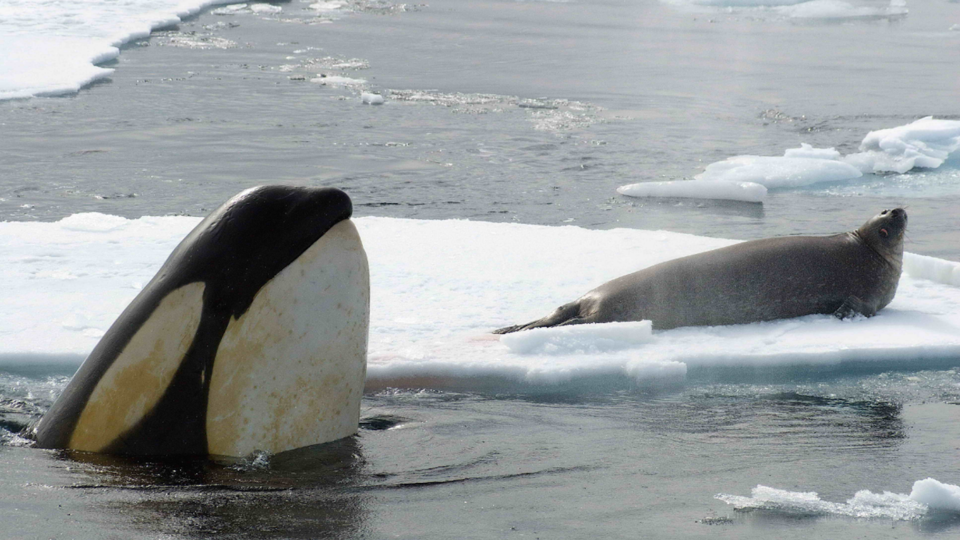Science News
Killer Whale Genes

Though only one species, killer whales (Orcinus orca), are very diverse. Not only do different ecotypes, or populations, appear distinct, they often eat different animals—ranging from marine mammals, fish, birds, and even reptiles. A new paper, published today, looks at how these differences are reflected in their genes.
These apex predators “are the largest species in the dolphin family (Delphinidae) and, together with humans, are one of the most cosmopolitan mammals, being found in all ocean basins and distributed from the Antarctic to the Arctic,” according to the new study. They’re highly social animals and evolved into specialized groups based on diets and hunting strategies adapted to exploit narrow ecological niches.
In the North Pacific, for example, there are two ecotypes, known as residents and transients. While their ranges overlap a bit, the residents eat fish, and the transients eat marine mammals. In the Antarctic, a smaller ecotype specializes in feeding on penguins, while a larger one feeds on marine mammals. These behaviors are likely passed down through the mother, according to the study. “A highly stable matrilineal group structure and a long postmenopausal lifespan in killer whales is thought to facilitate the transfer of ecological and social knowledge from matriarchs to their kin, and thereby perpetuate the stability of ecotypic variation in killer whales,” the team writes. But how much of this is passed down through the genes, the authors wondered.
The scientists sequenced the whole genomes of 50 individual killer whales from five different ecotypes and discovered that the whales diverged somewhere between 126,000 and 227,000 years ago. “Despite this recent shared ancestry,” they write, “substantial genome-wide differentiation and divergence had accrued between all pairs of ecotypes included in this study.” The team also determined that in all of the ecotypes, a population decline after divergence was followed by an expansion, one of the major evolutionary scenarios that allows new subgroups to emerge. The genome data also reflected the evolution of killer whale social structure and hunting behavior.
The study authors compare this genetic study with those of humans on how behavior and social structure, or culture as they call it, interact with our genes. And while it’s difficult to “demonstrate a causal association between cultural differences and selection on specific genes,” the divergence of genes based on the ecotypes implies an interaction between the two. Or in other words, it’s not nature versus nurture, but nature and nurture.
Image: John Durban, NOAA Southwest Fisheries Science Center; research authorized by NMFS (US) permit # 774-1714